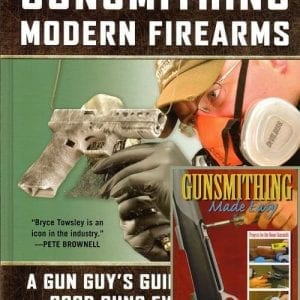
This Barnes TSX bullet was recovered from a Cape buffalo. It’s a .500 Nitro Express bullet weighing 570 grains. Shown are an unfired .500 bullet and a 30-caliber 165 grain TXS for scale. Big heavy bullets are the key to dangerous game rifles.
I don’t know why, but I have a bad habit of finding a hunting company on its last legs and throwing money at them for lousy hunts. I just did that again in Zimbabwe. You know that old adage, “fool me once, shame on you, fool me twice, shame on me?” Well this was my second trip with this bunch and it just keeps getting worse. So I guess, “shame on me.”
Part of the problem is the corrupt government of Zimbabwe and their attempt to steal the safari business from the white operators. As a result, the company I booked with didn’t get permits to hunt much of the property they control. For the land they did get permits, they got them late and were trying to play catch up on the safari season and do it all on a fraction of the property they normally hunt. As a result, I was on a property that was small for even one hunter on a multi-species safari, where they were running three safaris, each under pressure to produce several animals. The results were not good. With all that hunting pressure the game figured it out quickly and moved to the neighboring properties where there were no safari trucks or guys with guns.
But, it did give me some time around the campfire with a few more Professional Hunters. Of course, as it always has on any of the safaris I have been on, the talk turned to guns. Like any PH I have ever met, they all had strong opinions. Remember these guys are running dangerous game hunts; elephant, buffalo, lion and leopard, not high fence plains game. They are also the guys who are called on to deal with problem animals in their areas. As with every experienced professional hunter I have ever talked with, they recommended big guns, big bullets and big cartridges.
You won’t hear any of the usual clichéd platitudes spouted by the armchair experts how it’s all about shot placement or other such nonsense. These guys do this every single day, they have seen hundreds of dangerous game animals shot and they know the importance of a big, heavy, bullet with lots of power behind it. There is no discussion, no dissension and no room for fools in the conversation.
The three PHs in this most recent camp all specialized in dangerous game hunts. They know what works and what does not. Two had .470 Nitro Express double rifles. The third, my PH, a young guy starting out, had a CZ in .458 Lott. He thought it was the smallest acceptable cartridge for dealing with problem elephants and is saving for the day he can afford a double rifle in a bigger cartridge.
Of course, the needs of a PH are different than the needs of a client. But, even at that the client should assume some responsibility for any situation and bring enough gun. In my never humble opinion, for a dangerous game safari, a client’s rifle should be at least a .416 with 400-grain bullets if he is after buffalo or elephant.

I shot this buffalo with my .416 UMT wildcat cartridge which pushes a 400-grain bullet at 2,550 fps.
I keep hearing how the countries in Africa that list the .375 or 9.3mm (.366) as the minimum legal bullet diameter are out of touch and don’t understand modern bullet designs. In fact, before I hunted Africa, I might have agreed with them. But, now after enough safaris to put me into double digits I can see the truth. It’s about size. Big, heavy bullets simply hit harder. If the big bullets are well designed that’s even better.

Barnes 500 grain .458 bullets. The solid was recovered from an elephant and the TSX expanding “soft” from a Cape Buffalo.
For the record, Barnes Bullets dominated with everybody in the discussion, both in “softs” the TSX and “solids.” Every PH I have ever talked with loved Barnes bullets and these guys were no exception. My guy had his .458 Lott loaded with 500-grain Barnes Banded Solids.
I’ll wager that anybody who will argue for the little guns and “shot placement” side of things has never dealt with a bad situation with a dangerous and large animal. Sure, that theory works when you are shooting at an animal that is standing there waiting for the bullet. But when they are crashing through the brush, perhaps trying to stomp you into a bloody puddle, even if they are wounded and just trying to escape, “precise” shot placement is a fantasy. When you have half a second to get a bullet into a blur in the brush, all that armchair theory disappears.
Bring a little gun and if things go wrong, and you are lucky, the PH will bail you out and save your ass. But, I don’t ever count on anybody but myself and when there is a few tons of “anger issues” trying to get me no gun is too big.

Tuskless elephants like this one can be very dangerous. Unprovoked attacks do happen. Even if you are hunting something else, you should be prepared to deal with whatever Africa throws your way.
It’s not just the game you are hunting; it’s common to encounter unprovoked attacks from buffalo, elephant and hippos. Just being out and about in their habitat puts you at risk. Do you seriously want to ignore the advice of the men who do it for a living and bring a small rifle?
The armchair experts and internet ballisticians forget one important fact. The only time that really counts is the worst case scenario. That’s what you must plan for, not the perfect shot.






